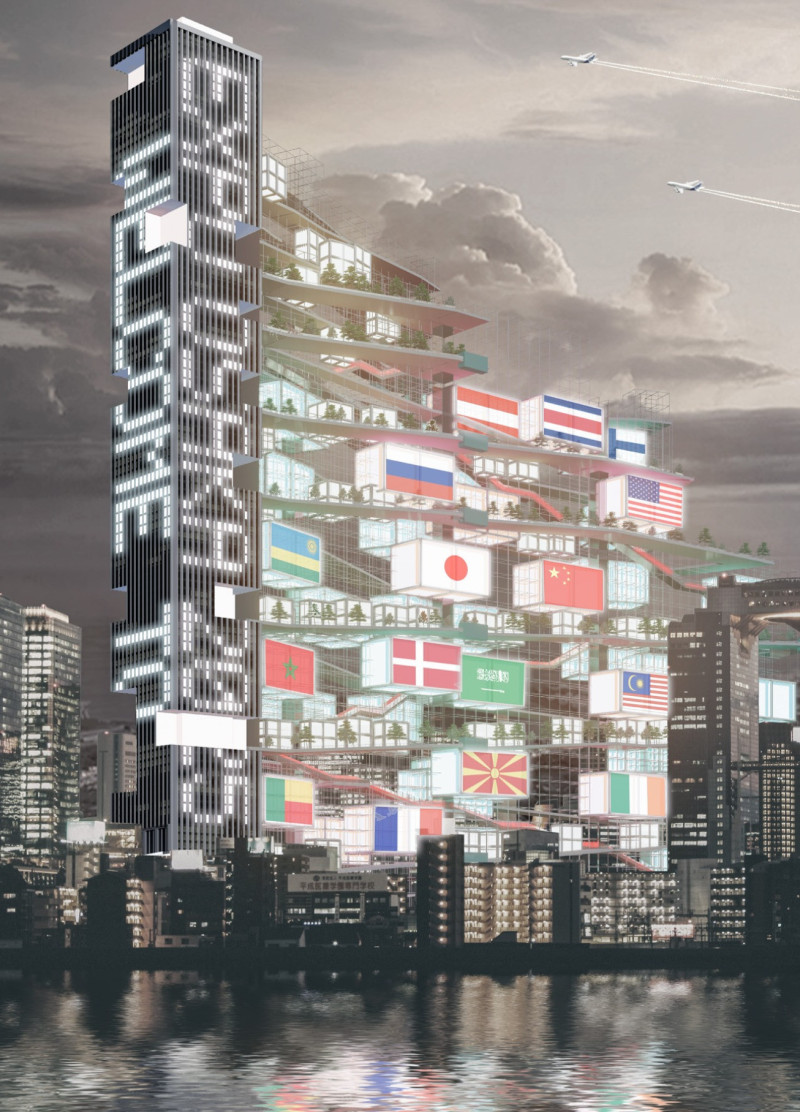5 key facts about this project
The Vertical Expo Park in Osaka, Japan, is set to host the 2025 World Expo, focusing on an innovative approach to large exhibition spaces. Located on an artificial island, the project prioritizes urban engagement and considers environmental challenges. The design concept emphasizes verticality, allowing for an efficient use of land while improving accessibility and enhancing visitor experience.
Verticalization of Space
The key architectural strategy for the Vertical Expo Park centers on the vertical arrangement of exhibition areas. By elevating pavilions, the project reduces the need for a sprawling layout. This design allows several structures to coexist in a compact space. In contrast to traditional horizontal layouts used in past Expos, this vertical approach encourages interactions among visitors, creating a lively environment that connects with local residents.
Site Selection and Urban Integration
The decision to use an artificial island as the site for the Expo has raised important discussions. Issues such as increased transportation costs and environmental impacts, including the risk to marine life, highlight challenges inherent to the original location. The proposal to shift the Expo to a triangular undeveloped area in front of Osaka Station aims to provide better access for residents and improve links to the city. This change is intended to make the Expo feel more like a community event rather than a closed-off experience.
Functionality and Mixed-Use Elements
The design of the Vertical Expo Park incorporates a range of functions, including public spaces, hotels, casinos, and venues for conferences. Only 30% of the site is dedicated to the Expo itself, leaving the remaining 70% for commercial activities and leisure. This integration seeks to create a vibrant urban atmosphere and support local economies, addressing concerns about the exclusivity often associated with international events.
In this approach, the focus on spatial planning takes precedence over specific materials. The emphasis is on how users experience the environment rather than the physical components used in construction.
Specific design details, such as elevated walkways and viewing areas, enhance the interaction between pavilions. These elements invite visitors to engage with their surroundings from various viewpoints, fostering a sense of openness and connection throughout the event space.



















































